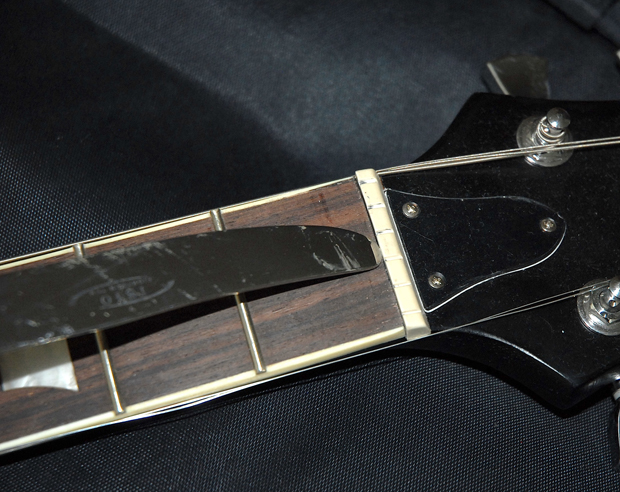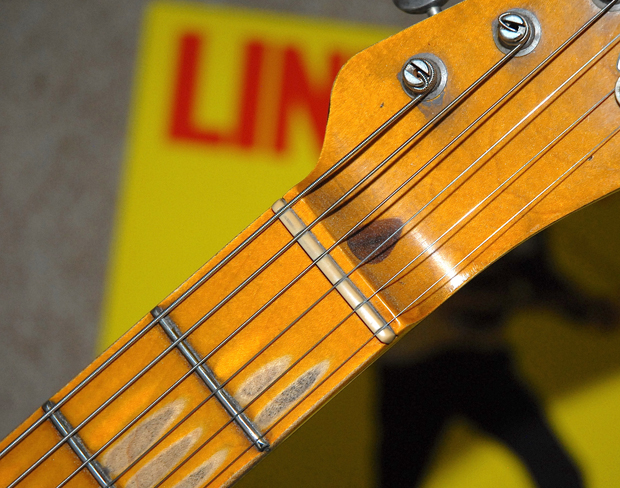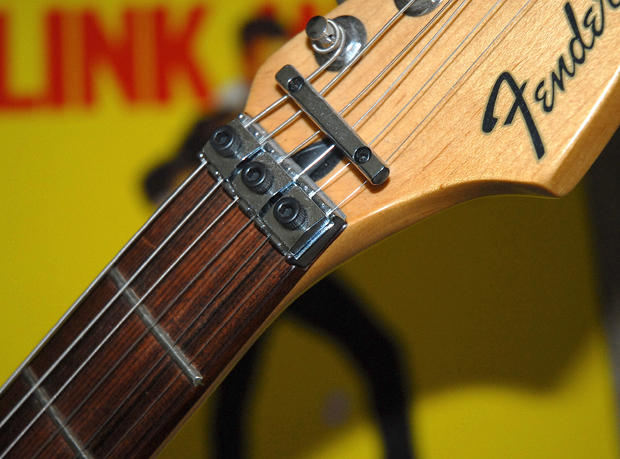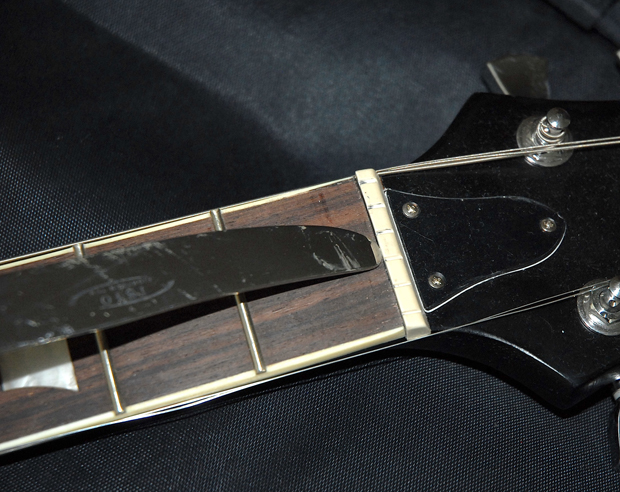Ed’s Shed: An Introduction to Nut Repair

I’ve had a few emails recently asking how I got into the whole guitar repair and maintenance thing in the first place. Funnily enough, my last blog post about wanton six-string abuse prompted an old colleague to remind me of the episode that kick-started my guitar-tweaking career.
As I mentioned in my last blog post, I worked at a music store in Glasgow, Scotland, for what seemed a lifetime. When I started working there in 1986, guitar repairs were handled by a guy affectionately nicknamed "The Butcher."
If I was being kind, I would say his heart wasn’t in his job. He was basically doing the repairs because no one else could be bothered.
One day a man walked into the store with a Les Paul copy. The guitar’s top nut was cracked. He wanted a new one fitted, natch. For my part, I was interested to know how the old nut could be removed without damaging the guitar’s fingerboard and finish.
"It’s glued in place," I pondered. "Surely it’s a delicate operation?" Well ...
No sooner had the customer left the store than my guitar-menacing colleague reached into a drawer behind the counter.
“We have all the right tools for the job,” he grinned, producing an old butter knife and a hammer. I recall being intrigued as he placed the rounded blade of the knife against the guitar’s top nut at the point where it met the fingerboard (recreated in pic 1, above and in the photo gallery below).
Get The Pick Newsletter
All the latest guitar news, interviews, lessons, reviews, deals and more, direct to your inbox!
What happened next changed my life. The Butcher gave the fat end of the knife an almighty whack with the hammer. The top nut broke free and flew through the air, pinging off the strings of an acoustic guitar at the other end of the room.
As the traumatized nut disappeared forever behind a stack of amplifiers, I remember thinking to myself, "That can’t be the proper way to do guitar repairs."
With The Butcher’s wholehearted blessing -- OK, it was more a shrug of indifference -- I soon took over the store’s guitar repair duties. I bought in the right tools, studied books on the subject and gained a good reputation for setups and building top nuts from bone blanks. I love a happy ending.
I thought this cautionary tale would be a good way to introduce the subject of my next few posts on my blog. A badly cut or setup top nut can cause poor tuning stability and playability, string buzz and annoying zinging sounds. So I’m going to hone in on the subject of top nuts, big time.
I’ll cover the different nut types; how to spot faults; how to repair faults; how to remove a faulty nut properly; and best of all, how to build a top nut from scratch.
No matter if your guitar has a regular plastic, brass or bone nut (See pic 2 in the photo gallery) or one of those locking jobs found on guitars with Floyd Rose or equivalent vibratos (See pic 3 in the photo gallery), you’re going to learn some valuable tips. I’ll take a look at the world of compensated nuts, too.
Trust me, we’re gonna go totally nuts for a while. See you next time.



Ed Mitchell was Reviews Editor on Total Guitar magazine from 2003, and his guitar-modding column, Ed’s Shed, appeared in print on both sides of the Atlantic (in both Total Guitar and Guitar World magazines). He was the Editor of The Blues Magazine from 2012-16, and a contributor to Guitarist, Classic Rock and Louder. He died in October 2022, aged 52. Between them, the websites Guitar World, Louder and MusicRadar host over 400 of his articles – among them interviews with Billy Gibbons, Paul Weller, Brian Setzer, profiles on Roy Buchanan, Duane Allman and Peter Green, a joint interview with Jimmy Page and Jack White, and dozens of guitar reviews – and that’s just the ones that made it online.










